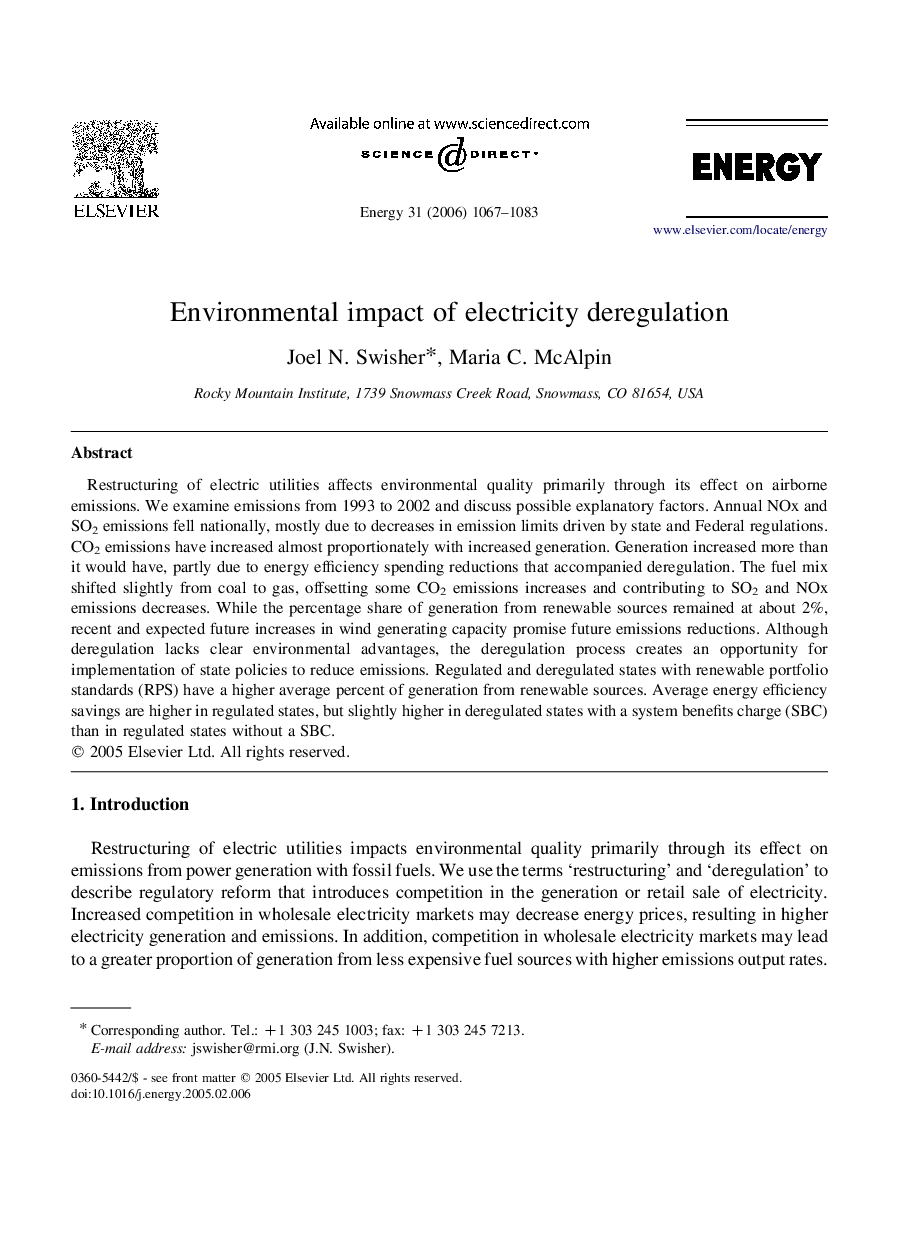| Article ID | Journal | Published Year | Pages | File Type |
|---|---|---|---|---|
| 1736478 | Energy | 2006 | 17 Pages |
Restructuring of electric utilities affects environmental quality primarily through its effect on airborne emissions. We examine emissions from 1993 to 2002 and discuss possible explanatory factors. Annual NOx and SO2 emissions fell nationally, mostly due to decreases in emission limits driven by state and Federal regulations. CO2 emissions have increased almost proportionately with increased generation. Generation increased more than it would have, partly due to energy efficiency spending reductions that accompanied deregulation. The fuel mix shifted slightly from coal to gas, offsetting some CO2 emissions increases and contributing to SO2 and NOx emissions decreases. While the percentage share of generation from renewable sources remained at about 2%, recent and expected future increases in wind generating capacity promise future emissions reductions. Although deregulation lacks clear environmental advantages, the deregulation process creates an opportunity for implementation of state policies to reduce emissions. Regulated and deregulated states with renewable portfolio standards (RPS) have a higher average percent of generation from renewable sources. Average energy efficiency savings are higher in regulated states, but slightly higher in deregulated states with a system benefits charge (SBC) than in regulated states without a SBC.
